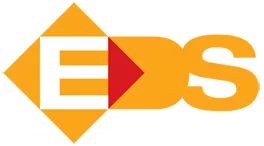Applying the Pareto Principle to Supplier Management
Every procurement professional knows that not all suppliers contribute equally to business success. In fact, according to the Pareto Principle, roughly 20% of your suppliers account for 80% of your total purchasing volume, while the remaining 80% of suppliers often contribute to just 20% of spend—but generate a disproportionate share of your workload.
This “long tail” of small, low-volume suppliers can quietly drain resources. Every supplier relationship comes with hidden costs—administration, documentation, payments, communication, and quality management. Studies show that managing each supplier can cost companies US500–US1,500 annually in administrative overhead alone. Multiply that by dozens or even hundreds of minor suppliers, and it becomes clear how fragmented sourcing inflates indirect costs.
The Real Cost of Managing Too Many Suppliers
Beyond administrative costs, an overloaded supplier base creates operational inefficiencies and risk.
Procurement teams spend valuable time processing low-value orders, chasing confirmations, managing discrepancies, and maintaining fragmented supplier data. This often leads to:
-
Lack of transparency: hard-to-track transactions and unclear total spend visibility.
-
Uncoordinated orders: small, frequent orders increase freight costs and carbon footprint.
-
Reduced negotiation leverage: too many small vendors mean missed opportunities for volume consolidation.
-
Quality inconsistency: less oversight can result in quality deviations and delays.
In other words, while your strategic 20% of suppliers drive the majority of value, the other 80% create disproportionate complexity.
How the Pareto Principle Can Transform Your Procurement Efficiency
Focusing on your top suppliers allows you to invest in relationships that truly matter—those that influence product quality, innovation, and lead time. But ignoring the rest isn’t an option either. This is where a specialized sourcing partner like EDS International can step in.
By outsourcing the management of low-volume suppliers, companies can streamline operations, reduce administrative burden, and gain more control over indirect spending. EDS becomes your single point of contact for all those smaller suppliers—aggregating volume, standardizing communication, and ensuring quality and compliance across every transaction.
Our supplier management and quality control processes ensure that even low-volume suppliers meet your standards. Through our strategic sourcing approach, we help clients optimize spend while maintaining flexibility and visibility.
Why EDS Is the Ideal Partner for Managing Your Supplier Base
With over four decades of global sourcing experience, EDS International specializes in helping manufacturers and procurement teams refocus their efforts where they matter most.
Our on-the-ground experts in India, Vietnam, Thailand, China, Taiwan, Mexico and more manage your small and mid-tier suppliers efficiently—reducing costs, improving reliability, and simplifying your supply chain structure.
When EDS manages your long tail, you gain:
-
Reduced administrative overhead and supplier consolidation.
-
Standardized communication and reporting for greater transparency.
-
Improved cost control through aggregated purchasing and volume leverage.
-
More time for your procurement team to focus on strategic partnerships and innovation.
Let EDS handle the 80% that slow you down—so you can focus on the 20% that drive your business forward.
Conclusion
The Pareto Principle reminds us that not every supplier deserves equal attention. By strategically managing your supplier portfolio and partnering with experts like EDS, you can unlock significant cost savings, operational clarity, and procurement efficiency.
EDS International is your trusted global sourcing partner—helping you simplify complexity, enhance supplier performance, and focus on strategic growth.
Contact us today to discover how we can help optimize your supplier base.








